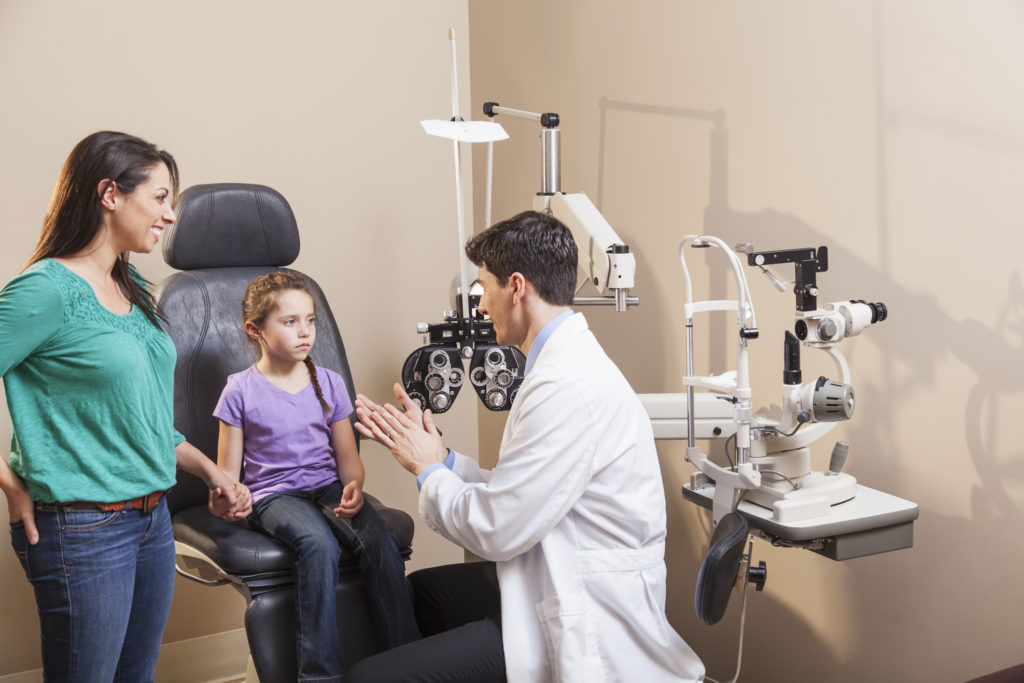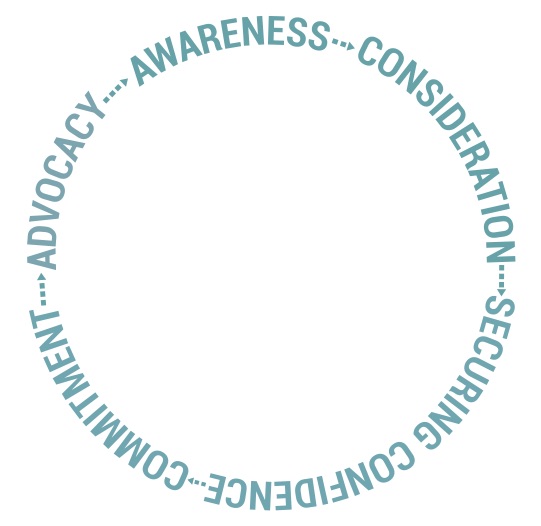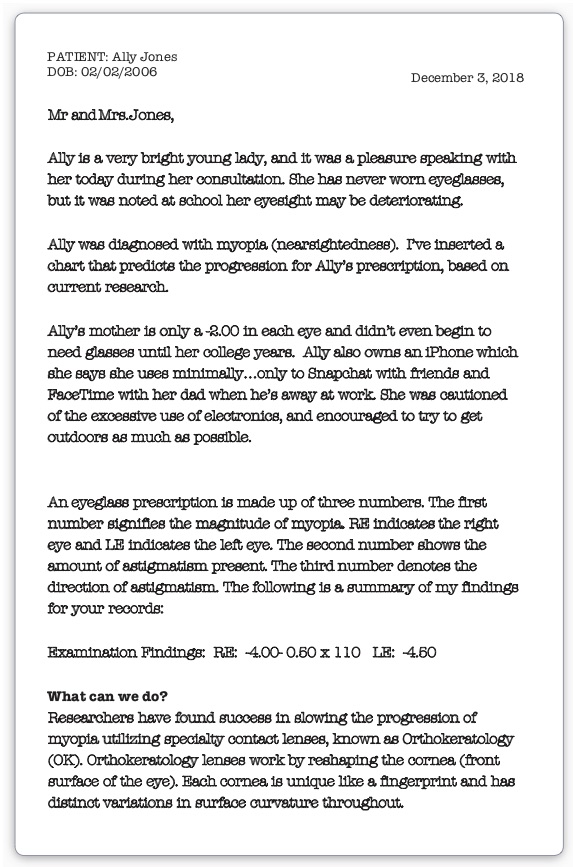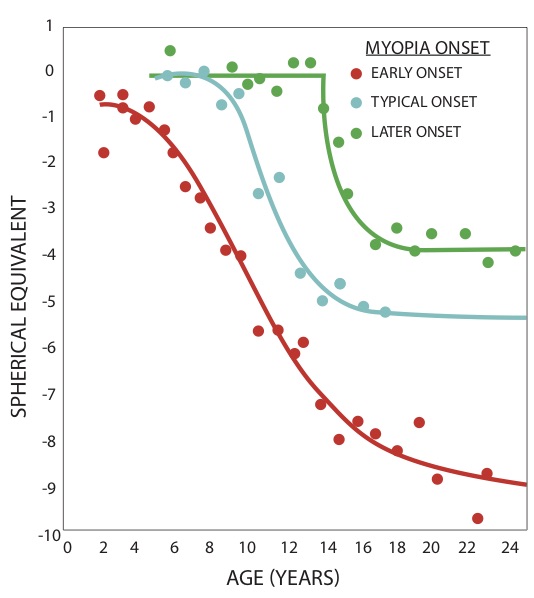April 12, 2019
By Nicholas Despotidis, OD, FAAO, FCOVD, FIAO
Review of Optometric Business, December 2018
 Achieving success in myopia management requires a strategy. The following 12 actions are integral to building a myopia management specialty:
Achieving success in myopia management requires a strategy. The following 12 actions are integral to building a myopia management specialty:
Persevere
I have seen many of my colleagues strive for success but come up three feet short of hitting gold. Success takes time and perseverance.
I took a personal interest in ortho-k when my sons became myopic, and I was able to slow the progression of their myopia. That was back in 1998, and it took the following 10 years for it to pick up steam in our practice. But offering this service to patients provides a great deal of satisfaction professionally.
Our practice has worked with consulting groups The Power PracticeTM and the EMyth, based on the book of the same name. In the process, we learned that striving for higher gross/more patients is not the answer to success. We now work three days a week with a total team effort. We focus on medical optometry, Vision Therapy (VT) and myopia management.
Begin by defining myopia control. It is not the same as Ortho-K. Myopia management is not just a therapy with atropine nor soft multifocal contact lenses.
Myopia control is understanding the demographic that is interested in slowing the progression of myopia. We identify the parent interested in this and work from there.
It is helpful to compare myopia control with the obesity epidemic. We realize that we’re heavier than in years past, but that realization has not lead to action in the U.S. Likewise, just because there is an epidemic of myopia does not mean parents will embrace methods to slow its progression. In my experience, only a select demographic views myopia as a disease and is interested in its containment. That’s the demographic we focus on.
What’s required is that we allocate adequate time and resources to succeeding with myopia control. If you squeeze specialty care patients into a busy schedule you will fail at it. Take the time to engage patients; they will refer friends and family.
Marketing works, advertising doesn’t
Traditional advertising does not work with myopia control. Advertising presents a simple call-to-action and a sale; with myopia management the task of fully educating a patient in what to expect of treatment and outcome is too extensive to provide briefly.

Our marketing of myopia management is multi-stepped: awareness, then consideration, which leads to securing confidence and commitment to treatment. This, in turn, creates patient loyalty and advocacy that provides more patients.
The right approach requires an awareness of current patients. You need to develop loyalty and word of mouth. In the digital world, Apple has done this, developing loyalty that leads to product advocacy.
Create raving fans
Internal marketing is highly effective, and this includes marketing in the exam chair. Know the demographic of your patients and address their stress.
In that end, you need raving fans, not just happy patients.
Show you care by taking time to answer the many questions that parents have concerning myopia management. This often is a new option for parents. To your patients, show how you are different and special. A big part of that is allocating adequate time and resources. If you try to squeeze specialty care patients into your busy schedule, you will fail at myopia management. You will succeed when you take time to engage patients, and they will refer friends and family members.
Know your demographic
Generally speaking, overachievers are interested in myopia control. Recognize nervous parents who are concerned about their children. There also are guilty parents, who view myopia as a disease and haven’t done enough to help their children.
Knowing the demographic to “market” to is critical to success. In myopia management, it’s about wowing current patients who will refer others. However, in specialties like VT, referrals often come from occupational therapists, post-concussion doctors, coaches and teachers–but less frequently from patients. In a low-vision subspecialty, retinal specialists are normally our referral sources. And in specialty contact lenses, like scleral lenses, it’s cornel specialists who generally refer to us.
As we learned in building a successful ortho-k practice, all types of patients are interested, so know who you are marketing to. Another lesson from VT: It’s not just about the patient; it also involves the circle of support, which includes occupational therapists, post-concussion doctors, coaches, teachers, etc. Contrary to other specialties (low vision, rehabilitative vision) where referals come from fellow professionals, referrals for ortho-k come from patients and parents who have been wowed with their own ortho-k experience.
Provide Critical Non-Essentials in your office
Consistency, consistency, consistency is the key to providing outstanding patient care. As we are taught, there are 21 points of care in an eye exam. Tonometry, ophthalmoscopy and visual fields are examples of essential steps. However, there are other steps that are considered non-essential yet are critical to good clinical care. These include:
- Respond to parents who Email or text the office
- Place urgency in your response
- Spend time with patients during their visit
- Follow up after every visit
- Assign dedicated staff to patients
- Thank parents following each visit
When you create raving fans, it’s a fragile relationship. Consistency will overcome resistance.
HAVING THE CONVERSATION:
“Can we get in right away?”
Know the ultimate goal
Have all patients refer qualified candidates to your practice. For myopia management, this cannot just be everyone who is myopic; they need to be myopes who view myopia as a disease. Further, each patient must be a motivated, qualified patient. By “qualified,” this means the patient understands both the treatment and the doctor providing it; they need to know why they are choosing you and putting their trust in your abilities.
Make time for a consultation
When I first offered orthokeratology as an option for myopia correction, I tried to explain it during my comprehensive eye exam. Big mistake!
Parents were unfamiliar with myopia management as a corrective option for their kids. They expected eyeglasses or contact lenses, and I rarely was successful in telling them why orthokeratology was the best option for their children within the confines of a 20-minute eye exam.
Today, I recommend a separate consultation for their child to determine what option is best. I explain that if they’re interested in arresting their child’s myopia, there are options but further testing is necessary. Out of 40 parents, only one proceeds with this recommendation; the remainder stick to traditional vision correction.
During the consultation, I allow time to not only trial the lenses on the child, but just as important, engage the parent and child on our care. We’re not simply fitting the child, we’re treating a family that is concerned with their child’s myopia progression and wants to know all options and what’s involved with each. The consultation lets us achieve those goals.
Most practitioners focus on fitting lenses at the consult; we focus on making the patient feel comfortable with our office and safe with our treatment. We talk to the child directly and gain their trust, then we proceed with the fitting process. Following our diagnostic testing, we give the child a snack to reward them for their courage and trust. This is not trivial. As parents, we appreciate when our kids are happy and feel safe. Further, we need to feel confident in their healthcare provider.
When we’ve completed the evaluation aspect of the consult, we leave time to talk with the parents and answer all their questions–and there are plenty! Remember, the parent interested in myopia management for their child often is highly educated and inquisitive, yet skeptical. Spend time with the parent to engage them in your quality of care (not myopia control; the two are very different).
Parents will ask:
“Are there side effects?”
“Why don’t other doctors offer myopia management?”
“Is it permanent?”
“How does it work?”
“What happens if my child cannot adapt to the treatment?”
The questions may seem endless, however if you allot the time and don’t rush the parents, your success is assured. That’s our “secret sauce.”
Email patients after the consult
After a lengthy consultation, parents need to go home and digest the information provided during their visit. We’ve learned to give them the opportunity to reach out afterward, via email, with any further questions or concerns. Here is a sample email and an example of a critical non-essential:
The purpose of the follow-up email is to solidify our commitment to helping their child, using unparalleled communication and education. We modify the email to reflect the parent’s individual questions and concerns. Make the email your own and stay in continuous contact with parents interested in myopia control for their children. Communication is good marketing and even better care.

Exam report: Say why the child will benefit from your care
We’ve learned that no matter how much time we spend with patients, a detailed report summarizing our findings and recommendations solidifies us as the best healthcare provider for their child. Here is a sample introduction to one of our reports:

Know your “Secret Sauce”
I have changed my motto from, “I help to keep children’s eyesight from getting worse,” to, “I don’t just treat eyes, I treat the child behind the eyes.”
And I mean it! I communicate this message before, during, and after the consultation. My office even emails patients after each visit, long after they enroll in our myopia management program. If you do this, you’ll be more than just an eyecare professional to your patients; you’ll become a trusted healthcare professional who cares enough by keeping in touch throughout the treatment process. Remember, good care is good marketing.
FEE DEVELOPMENT
All successful practitioners understand the importance of proper fee development. In the past, many of us allowed insurance reimbursement to dictate the fees we accept for services provided. This results in cognitive dissonance if the fees do not properly reimburse us for the care we want to provide.
Many of my colleagues enjoy taking their time with patients, learning more about them and their families, in order to provide personalized vision care. However, with healthcare reform, that focus has transitioned into efficiency, moving more patients through the system to compensate for reduced reimbursements, and eyeglass and contact lens flight.
Many practitioners set fees based on what their colleagues are charging. In my experience this is a mistake, because we all encounter different expenses associated with providing specialty care. Myopia management is unlike simple myopia correction; you’re treating a child in hopes of slowing the deterioration of their vision as they mature…no easy task. If a practitioner has a philosophy of fitting orthokeratology like regular contacts lenses, fitting patients into her schedule with other patients, this involves less chair cost than a doctor who follows the recommendations outlined in this article.
Emails, snacks, consultation appointments, reports, and critical non-essentials absorb staff and doctor time. If your fees do not reimburse you for that care, you should not embark on myopia management. Remember, there is a stark difference between being busy and being profitable.
To ensure the latter, you need to calculate your chair cost. Your CPA can calculate this for your office by taking into account how much you need to collect by the end of the day to pay everyone except the owners. If your accountant finds you need to earn $2,000 per day to pay your bills, and you’re open an average of 10 hours a day, your chair cost is $200 per hour. Only after you exceed this number will you personally profit from services you provide.
If your chair cost is $200 an hour and it takes you three hours in a year to provide myopia management to one patient, you’ll need to collect $600 in fees plus material costs before you profit. Successful practitioners calculate their chair cost and materials needed to offer myopia control, then arrive at fees which make it worth their effort to provide such specialty care. Take into account you’re not simply treating myopia; you’re treating a child with myopia and the family who cares for them.

This is why many practice owners are busy, but their personal salaries are not proportionate to the time they spend and the effort they place in their practices. This does not need to be the case with myopia management. It’s not a commodity: The “secret sauce” is YOU!
Your job is to assure you’re implementing the aforementioned steps to create raving fans. Slow and steady wins the race; be patient with yourself and don’t give up. It’s worked for us and for hundreds of doctors who’ve followed our systems. If you decide to embrace myopia management yet only wind up dabbling in it, you may be stopping three feet away from practice autonomy.

Nicholas Despotidis, OD, FAAO, FCOVD, FIAO, is with Eyecare Professionals, a group practice in Hamilton Square, New Jersey.













